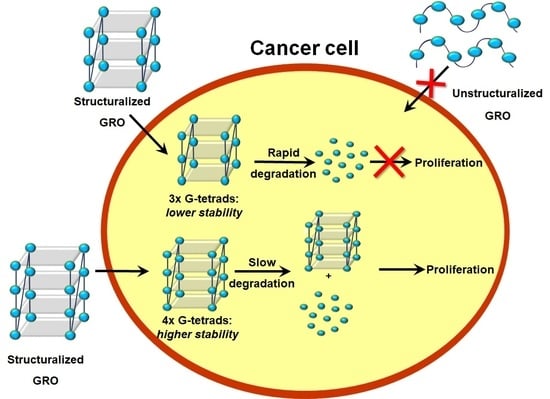G4 Matters—The Influence of G-Quadruplex Structural Elements on the Antiproliferative Properties of G-Rich Oligonucleotides
Abstract
Share and Cite
Roxo, C.; Kotkowiak, W.; Pasternak, A. G4 Matters—The Influence of G-Quadruplex Structural Elements on the Antiproliferative Properties of G-Rich Oligonucleotides. Int. J. Mol. Sci. 2021, 22, 4941. https://doi.org/10.3390/ijms22094941
Roxo C, Kotkowiak W, Pasternak A. G4 Matters—The Influence of G-Quadruplex Structural Elements on the Antiproliferative Properties of G-Rich Oligonucleotides. International Journal of Molecular Sciences. 2021; 22(9):4941. https://doi.org/10.3390/ijms22094941
Chicago/Turabian StyleRoxo, Carolina, Weronika Kotkowiak, and Anna Pasternak. 2021. "G4 Matters—The Influence of G-Quadruplex Structural Elements on the Antiproliferative Properties of G-Rich Oligonucleotides" International Journal of Molecular Sciences 22, no. 9: 4941. https://doi.org/10.3390/ijms22094941
APA StyleRoxo, C., Kotkowiak, W., & Pasternak, A. (2021). G4 Matters—The Influence of G-Quadruplex Structural Elements on the Antiproliferative Properties of G-Rich Oligonucleotides. International Journal of Molecular Sciences, 22(9), 4941. https://doi.org/10.3390/ijms22094941








